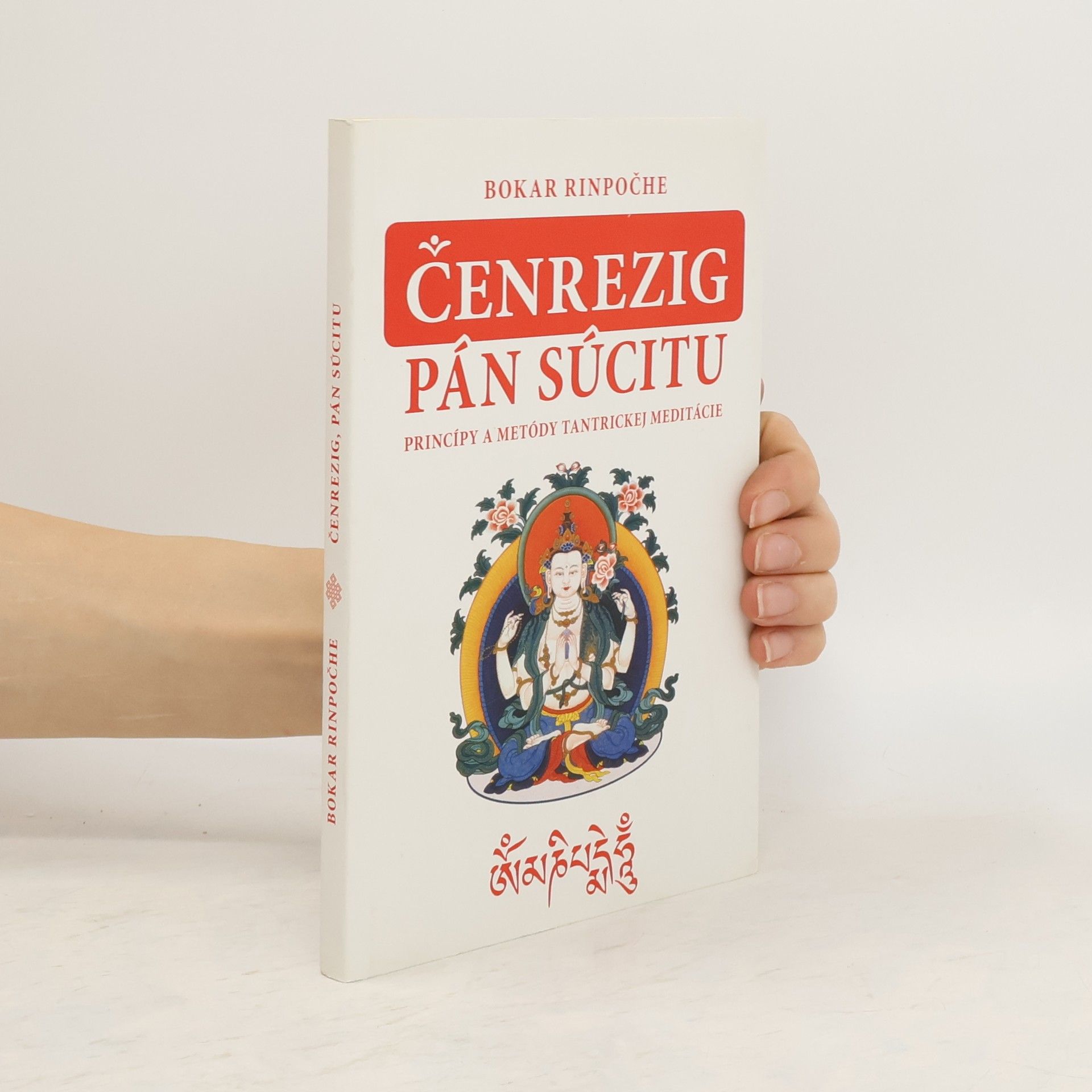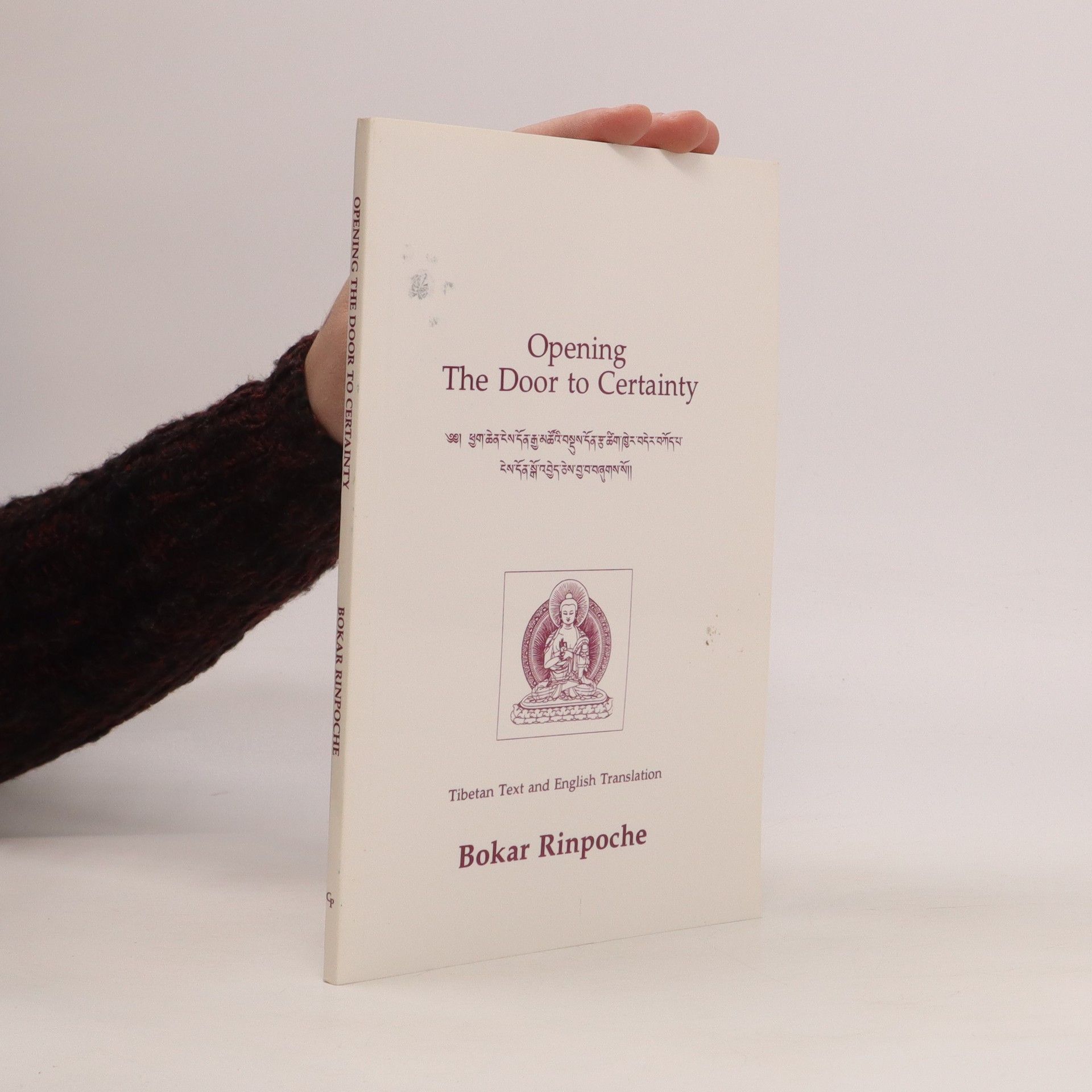Opening the Door to Certainty (tibetsky, anglicky)
- 64 páginas
- 3 horas de lectura
Bokar Tulku Rinpoche fue un hijo espiritual de Kalu Rinpoche y un portador de linaje de las tradiciones Karma Kagyu y Shangpa Kagyu. Se convirtió en un maestro principal de Kalu Yangsi, creído ser la reencarnación de H.E. Kalu Rinpoche. Su trabajo incluyó la dirección del Grupo de Traducción Kalu Rinpoche, facilitando la difusión de enseñanzas.





Tara, the most famous female deity in Tibetan Buddhism, is a personification of the Prajnaparamita and a mother dedicated to protecting her followers. Bokar Rinpoche presents the various aspects of Tara and the origin of her tantra, relates contemporary examples of her benevolent activity, provides an explanation of her praise, offers instruction for devotional practice, and discusses remarkable women in Indian and Tibetan Buddism. An extensive iconography completes the text.
Like An Lives of the Shangpa Kagyu Masters presents the lively, touching, vibrant tales of the rare Shangpa Kagyu lineage of Tibet. This is the first English translation of biographies written between 500 and 1000 years ago. Like An Illusion includes the biographies of two accomplished women, the dakinis Niguma and Sukhasiddhi. The life stories then continue through the lineage, from Khyungpo Naljor, great yogi of the Shangpa Lineage, to Mokchokpa, Kyergangpa, on down to Jetsun Taranatha.
Jamgön Kongtrul Lodrö Tayé (1813–99),a pivotal figure in the nonsectarian movement of eastern Tibet, was one of the most outstanding writers and teachers of his time. In his monumental Encyclopedia of Buddhism, he presents a complete account of the major lines of thought and practice that comprise Tibetan Buddhism. Myriad Worlds is the first part of that work.As a prelude to Kongtrul's survey of the entire range of Buddhist teachings, Myriad Worlds describes four major cosmological systems found in the Tibetan tradition—those associated with the Hīnayāna, Mahāyāna, Kālacakra, and Dzog-chen teachings. To suit the capacities of different grades of beings, Buddha taught four levels of cosmology: the numerically definite cosmology of the individual way; the cosmology of infinite buddhafields of the universal way; the special cosmological system of the Kālacakra Tantra; and the dazzling non-cosmology of the Dzog-chen system, which dispenses with the dualistic perspective, revealing the creative principle to be awareness alone.Each of these cosmologies shows how the world arises from mind, whether through the accumulated results of past actions or from the constant striving of awareness to know itself.This detailed and thorough account of worldviews that present conceptions of space and time which differ significantly from Western ideas is at once illuminating and challenging.